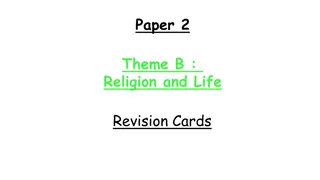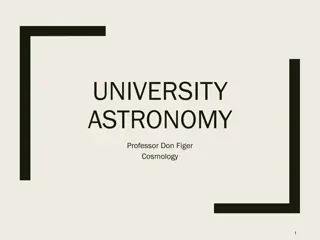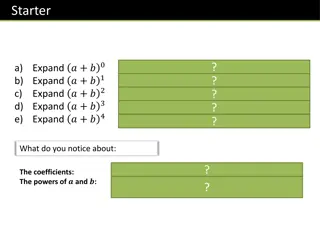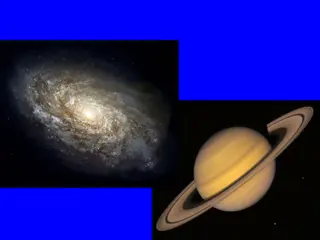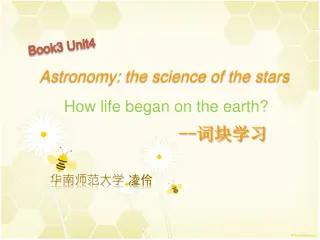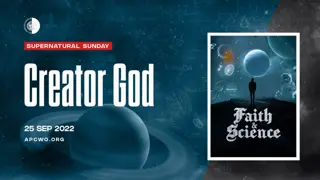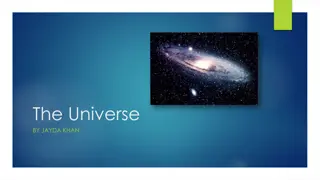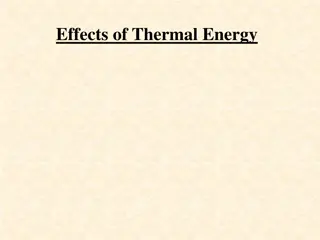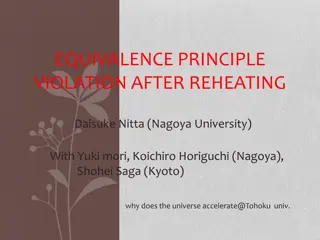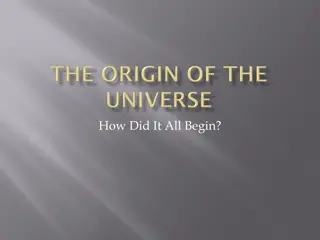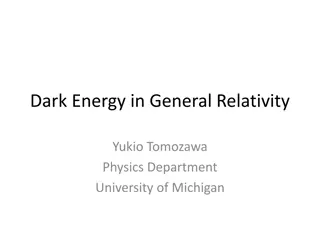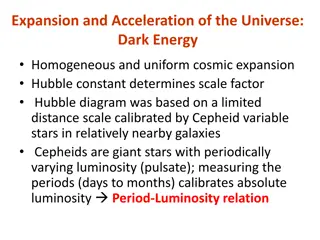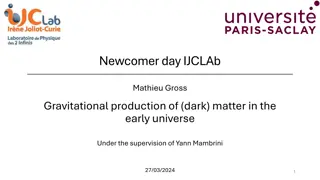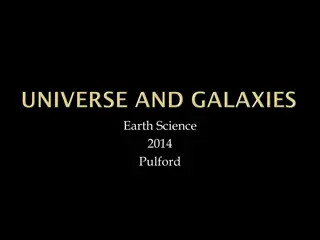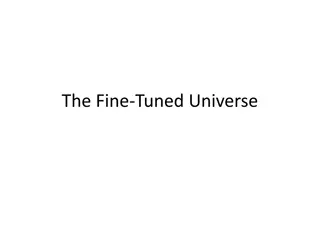Exploring the Origins and Expansion of Our Universe
Delve into the mysteries of the universe as we discuss its vastness, the beginnings discovered by scientists like Edwin Hubble, and the significance of the Hubble Space Telescope in deepening our understanding of space. From the Big Bang theory to the concept of singularity, journey through the evolution of our cosmic realm.
Download Presentation

Please find below an Image/Link to download the presentation.
The content on the website is provided AS IS for your information and personal use only. It may not be sold, licensed, or shared on other websites without obtaining consent from the author. Download presentation by click this link. If you encounter any issues during the download, it is possible that the publisher has removed the file from their server.
E N D
Presentation Transcript
What is in the universe? Our universe is a vast area of space within which we find all the galaxies, stars and solar systems that make up the universe as we know it.
Was there a beginning to the universe? How did our universe begin? Where did it all start? What was there at the very beginning? These are some of the questions that humans have asked in their desire to discover the origins of the universe. People have always had more questions than answers on this subject. The limits of our technology meant there was a complete lack of evidence for scientists to work with previously. These questions about the creation of the universe remained unanswered until discoveries in astronomy and physics led scientists to determine that there was a beginning to our universe.
Edwin Hubble In 1929, US astronomer Edwin Hubble discovered that the universe is expanding. This means that all objects in the universe are moving away from each other. Hubble noted that not only was the universe expanding, it was expanding at a great rate. Hubble s discovery became known as Hubble s Law. Hubble s Law: Galaxies are moving away from each other. The farther away a galaxy is, the faster the galaxy is moving away from us.
Why is the Hubble Space Telescope so important? The Hubble Space Telescope, which was launched by NASA in 1990, is named after Edwin Hubble. The Hubble Space Telescope is extremely important for furthering our knowledge of space. Normally when we look into space we are looking through telescopes that are located on Earth.
Why is the Hubble Space Telescope so important? The images that we see are distorted or changed by Earth s atmosphere. This can affect what we see. The Hubble Space Telescope is out in space, orbiting at a height of 569 km above Earth. Therefore, Earth s atmosphere does not affect the images the telescope receives from space.
Was there really a Big Bang? The term bang suggests that there was an explosion of some form. But this is not actually what happened at the start of the universe. A starting point Edwin Hubble concluded that there must have been a single moment when the entire universe was held within a single zone. This was the beginning of the universe, which Hubble s observations put at around 13.8 billion years ago. Scientists call this single zone, in that single moment, the singularity. Singularity: a zone that is very, very small, very, very dense and very, very hot.
The Big Bang The singularity was a region so intensely hot that the normal particles of matter particles that occur in atoms did not exist. Within a single moment (some scientists believe this time frame to be as short as one second) this intensely hot singularity expanded rapidly. This is what we term the Big Bang. In the first few moments after the Big Bang the universe was so hot that we cannot imagine a level of temperature that great.
After the Big Bang As the universe continued to expand it began to cool. The now cooler temperature allowed particles to exist. It was now also cool enough for light to begin to travel through the universe.
How did matter form? Gravity is a force that pulls particles together. We will be looking again at gravity when we learn about the planets. This force of gravity, which was originally present within the singularity, allowed the particles to form matter. This matter came together and formed into the stars, the planets and all other known structures in the universe. We will be looking at all of these structures in the following chapters. Large groups of stars formed into the galaxies and our universe came into existence.
The universe expanding ever since the Big Bang The Big Bang theory is only one of the explanations for the formation of the universe. It is how scientists have tried to explain how the universe developed from a single moment. It is amazing to think that we are living on a planet that is orbiting a dazzling star (i.e., the Sun).
The universe expanding ever since the Big Bang Our galaxy is also one of many other galaxies that make up the universe. The exact answer to how our universe began is still unknown. Scientists continue to look for an explanation for the origin of our universe.
Photo credits Shutterstock iStock Science Photo Library



